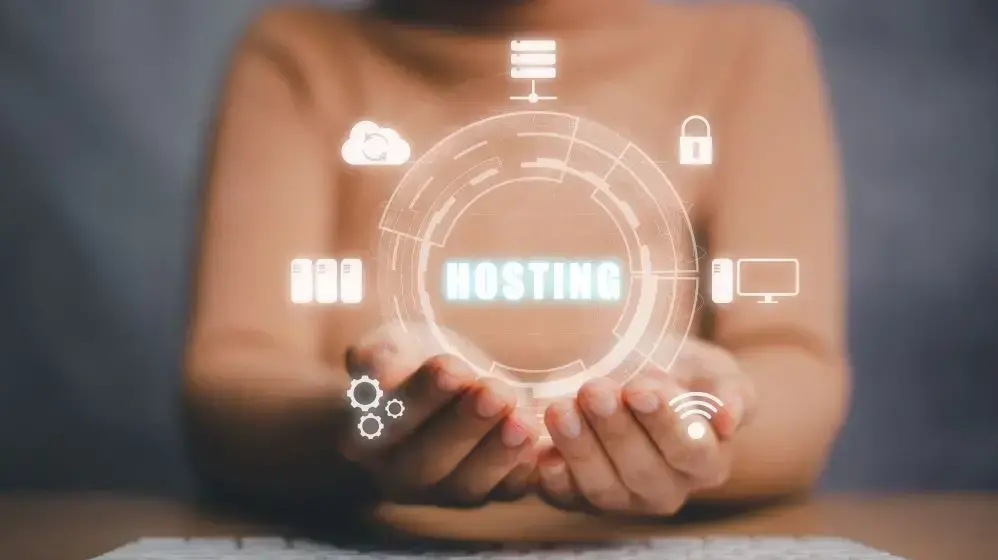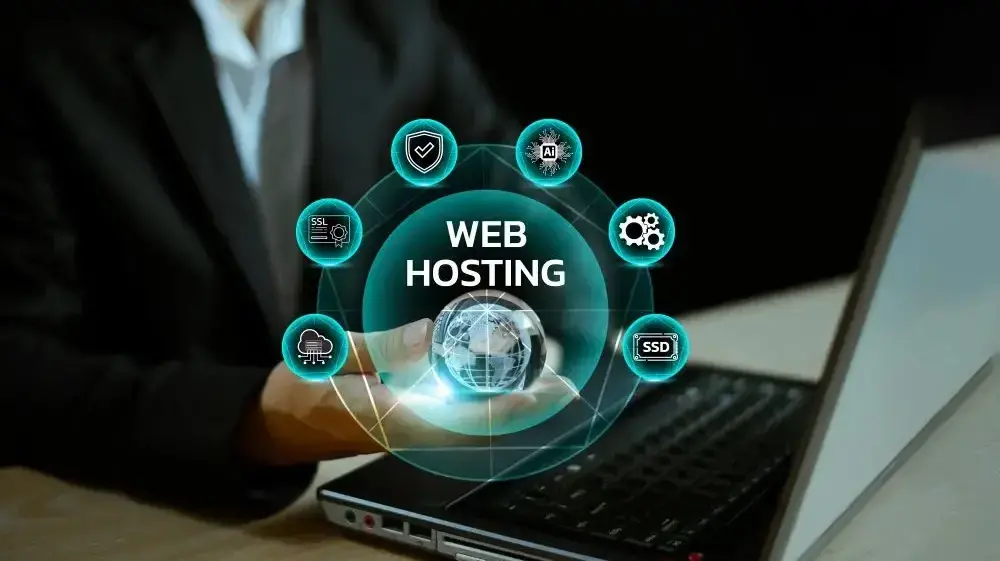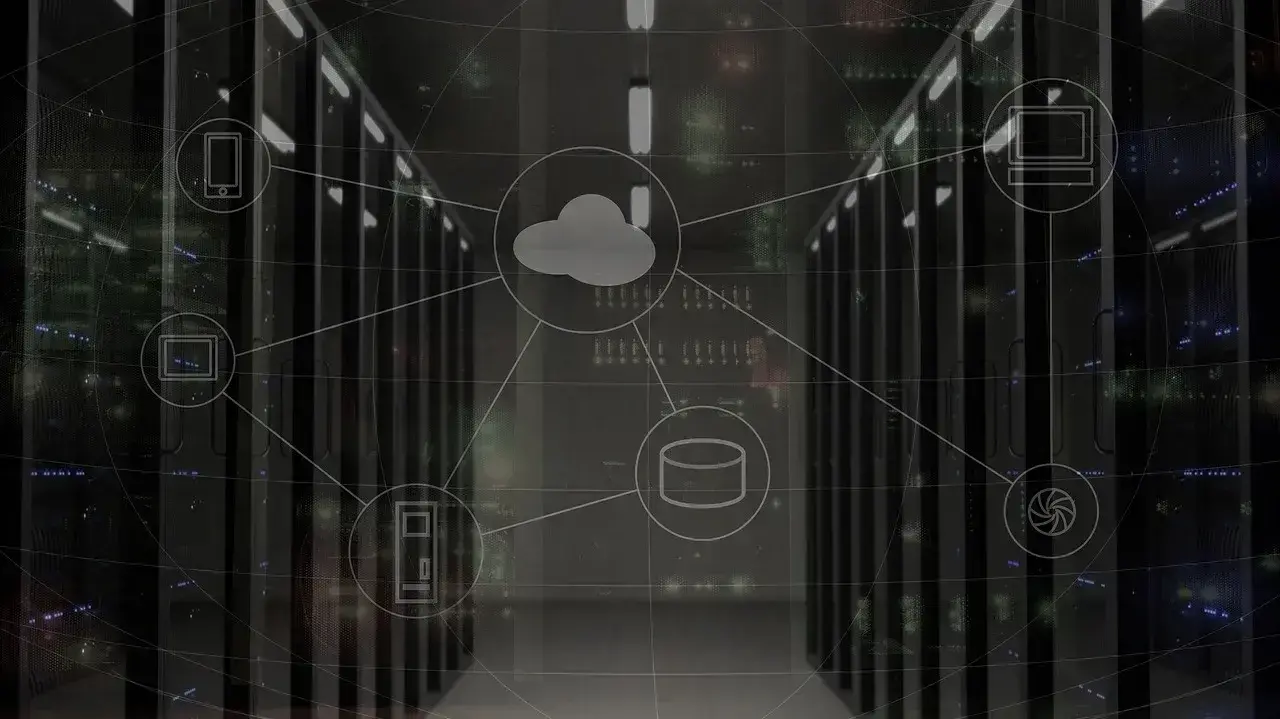In our digital age, data centers and servers consume significant energy, prompting the adoption of eco-friendly solutions like green hosting. Traditional hosting, reliant on electricity from non-renewable sources, contributes to carbon emissions and environmental harm.
Green hosting, also known as eco-friendly addresses these issues by minimizing its carbon footprint. These providers employ eco-friendly practices and technologies to reduce energy usage and environmental impact when hosting websites and online applications.
Eco-friendly technologies like green hosting are gaining prominence due to their alignment with global climate goals. They offer practical, ethical solutions for reducing the digital environmental footprint.
Stay tuned as we delve deeper into green hosting, exploring its benefits and its pivotal role in shaping a sustainable digital future.
What is Green Hosting?
Green hosting is a type of web hosting that prioritizes environmental sustainability. It uses clean renewable energy sources like wind and solar power to run its servers, which are designed to use as little energy as possible.
Unlike traditional hosting green hosting providers go the extra mile to reduce the environmental impact of data centers and server operations by using clean energy and being more efficient. This innovative hosting solution is rooted in a range of characteristics that set it apart from conventional hosting methods.
Characteristics of Green Hosting
Renewable Energy: Green hosting providers use renewable energy sources like wind, solar , or hydroelectric power to run their data centers, reducing reliance on fossil fuels.
Energy Efficiency: They employ energy-efficient infrastructure, including server hardware and cooling systems, to minimize energy consumption.
Carbon Offsetting: Many green hosting services invest in carbon offset programs or purchase renewable energy credits to compensate for any remaining carbon emissions.
Sustainable Practices: These providers often implement sustainable practices such as recycling, reducing electronic waste, and using environmentally friendly building materials for their data centers.
Green Hosting vs. Traditional Hosting
The disparity between green hosting and traditional hosting becomes clear when examining energy consumption and carbon emissions. Traditional hosting methods, which prioritize immediate operational convenience, have led to alarming statistics.
Research indicates that data centers globally consumed around 205 terawatt-hours (TWh) of electricity in 2020 – equivalent to the energy consumption of some medium-sized countries.
| Aspect | Green Hosting | Traditional Hosting |
|---|---|---|
| Energy Source | Relies on renewable energy sources (e.g., solar, wind, hydro) or offsets carbon emissions | Often powered by conventional fossil fuels |
| Carbon Footprint | Reduced carbon emissions through clean energy sources and carbon offsetting | Higher carbon emissions due to fossil fuel reliance |
| Energy Efficiency | Emphasizes energy-efficient infrastructure and data center designs | May use older, less efficient hardware and cooling systems |
| Data Center Location | Chooses data center locations with naturally cooler climates when possible | Less consideration for data center location's environmental impact |
| Waste Reduction | Prioritizes recycling programs and hardware longevity | May generate more electronic waste due to frequent hardware upgrades |
| Certifications | May hold certifications verifying eco-friendly practices | May lack specific green certifications |
| Cost | Costs may be competitive with traditional hosting or slightly higher | Costs may vary but generally competitive |
| Customer Education | Offers information and tips on sustainable web practices | Typically focuses on hosting features and performance |
| Market Presence | Smaller share of the hosting market, but growing | Dominates the hosting industry |
| Environmental Impact Awareness | Attracts customers who prioritize sustainability | May not be a primary concern for all customers |
The Environmental Impact of Data Centers
Data centers are known for their high energy consumption due to the constant operation of servers and cooling systems. This energy-intensive nature contributes significantly to global carbon emissions.
For example, data centers like the "Digital Hub" in Virginia" in Virginia, covering a whopping 1.6 million square feet consume electricity. The immense energy demand places stress on power grids, often necessitating the use of fossil fuels, which further exacerbates environmental impact.
Also, data centers need cooling to stay at the right temperature, but cooling systems generate waste heat that can affect the environment. They often use a lot of water, which can be a problem for local water supplies and harm aquatic ecosystems.
The environmental impact of data centers is a complex issue, with their energy intensity, carbon emissions, and cooling requirements having significant implications for the planet. Sustainable practices and technologies are crucial to reduce their impact.
Benefits of Green Hosting
Choosing green hosting is a smart move that brings many benefits. It helps the environment, saves money, and makes your website work better.
Environmental Benefits
Reduction in Carbon Footprint: Green hosting reduces the harmful impact on the environment by using renewable energy and eco-friendly practices, leading to lower carbon emissions.
Sustainable Energy Use: It relies on clean energy sources like wind or solar power, reducing the use of fossil fuels and supporting a sustainable energy future.
Decreased Resource Wastage: Green hosting minimizes resource wastage through efficient server operations and responsible data center practices, reducing electronic waste.
Business and Economic Benefits
Potential Cost Savings Over Time: By optimizing energy use and resource efficiency, green hosting can lead to lower long-term operating costs, reduced electricity bills, etc.
Positive Public Relations and Branding: Companies that choose green hosting often gain a positive public image for their commitment to environmental responsibility, which can enhance their brand reputation.
Competitive Advantage in Eco-Conscious Markets: Being environmentally conscious can attract eco-conscious customers and give businesses a competitive edge in markets where sustainability is valued.
Technical Benefits
Improved Server Efficiency and Performance: Green hosting providers typically invest in modern, efficient server hardware, resulting in improved website performance and faster loading times.
Longer Hardware Lifespans: Eco-friendly hosting practices, such as optimal cooling and maintenance, can extend the lifespan of server hardware, reducing the need for frequent replacements.
Companies worldwide, such as EcoTech Corporation and Organic Eats, are benefiting from using green hosting practices.
How Does Green Hosting Work?
Green hosting works by combining renewable energy sources, energy-efficient hardware, advanced cooling techniques, and carbon offsetting to minimize the environmental impact of hosting websites.
Renewable Energy Sources
Green hosting providers use clean energy sources like solar panels, wind turbines, hydroelectricity, and geothermal energy to power their data centers. This reduces reliance on fossil fuels and minimizes carbon emissions.
Energy-Efficient Hardware
Green hosting uses energy-efficient server hardware such as CPUs (central processing units), SSDs (solid-state drives), and power supplies. These innovations consume less electricity while delivering high performance.
Advanced Cooling Techniques
Green hosting employs innovative cooling methods like outside air for cooling, liquid cooling systems, and other efficient cooling technologies to maintain optimal server temperatures. These techniques reduce energy consumption compared to traditional air conditioning.
Carbon Offsetting and Credits
Many green hosting providers invest in carbon offsetting and credits by supporting environmental projects like tree planting or renewable energy initiatives. This enables them to achieve carbon neutrality or even carbon negativity by removing more carbon from the atmosphere than they emit.
Transitioning to Green Hosting: A Step-by-Step Guide
If you are considering transitioning to green hosting, here's a comprehensive guide to help you navigate the process seamlessly.
1. Evaluate Your Current Hosting
Start by understanding the environmental impact of your current hosting setup. Assess energy consumption, carbon emissions, and resource usage to identify areas for improvement.
2. Research Potential Green Hosting Providers
Look for hosting companies that prioritize sustainability. Consider their use of renewable energy, energy-efficient infrastructure, and environmental certifications. Read reviews, consider their reputation in the industry, and check if they hold any environmental certifications.
3. Cost Analysis
Evaluate the costs involved in transitioning to green hosting. Calculate the return on investment (ROI) and long-term benefits, including potential energy savings and improved brand reputation.
4. Making the Migration
Backup Your Data: Before migrating, ensure you have a complete backup of your website and all related data.
Choose the Right Plan: Select a green hosting plan that aligns with your website's requirements and growth projections.
Migrate During Off-Peak Hours: Choose a time when your website experiences lower traffic to minimize disruptions during the migration.
Update DNS Records: Update your Domain Name System (DNS) records to point to the new green hosting provider.
Test Your Website: Once the migration is complete, thoroughly test your website's functionality, loading speed, and any interactive features.
Monitor Performance: Keep an eye on your website's performance post-migration to ensure everything is running smoothly.
Update Content Management System (CMS) Settings: If applicable, adjust your CMS settings to reflect the new hosting environment.
5. Celebrate Your Green Transition
As your website seamlessly transitions to green hosting, take pride in the positive impact you are making on the environment. Communicate your commitment to sustainability with your audience and stakeholders, emphasizing your role in reducing carbon emissions.
6. Continuous Monitoring and Improvement
After migration, continue monitoring your website's performance, energy consumption, and carbon footprint. Regularly assess your hosting provider's practices to ensure they maintain their eco-friendly commitment.
By following these steps, you will not only align your digital presence with sustainability but also contribute to a greener future for our planet.
The Future of Green Hosting
Green hosting is set for a bright future. As the world focuses more on sustainability, green hosting will grow and become even better. We will look at where it is headed, new technologies, and how AI and machine learning are making it more energy-efficient.
Predicted Growth and Adoption Rates
- Green hosting is expected to see significant growth with the market projected to reach $60.7 billion at a compound annual growth rate (CAGR) of 27.8% by 2027. This surge is driven by environmental awareness and advancements in sustainable technologies.
Emerging Technologies in Green Hosting
One of the emerging technologies in green hosting is the use of advanced energy-efficient hardware and data center designs. This includes the development of more efficient CPUs, SSDs, and optimized server architectures to reduce energy consumption.
Another key trend is the integration of renewable energy sources like solar and wind power into data center operations. This helps hosting providers further reduce their reliance on fossil fuels.
Artificial Intelligence (AI) and Machine Learning (ML) are key to optimizing energy use in data centers. These technologies enable predictive maintenance, load balancing, and energy management to reduce energy wastage and improve overall efficiency.
Role of AI and Machine Learning
Experts suggest that AI and ML can analyze data to identify patterns and anomalies in energy consumption. This allows data center operators to make real-time adjustments to optimize energy use, such as adjusting cooling systems or workload distribution.
Recent research has shown that AI-driven predictive maintenance can help prevent hardware failures, reducing the need for emergency replacements and minimizing electronic waste.
Machine learning algorithms are also being used to optimize server workloads, ensuring that servers operate at peak efficiency and consume less energy during periods of low demand.
Green Hosting embraces AI, machine learning, and sustainable practices, ushering in an era of eco-friendly data centers that contribute to a responsible digital future.
Conclusion
Going green with hosting is not just for a select few; it is something everyone, from individuals to businesses and website owners, can do together. By choosing green hosting, you are not only reducing energy use but also sending a clear message about your commitment to balancing technology and nature.
Are you ready to make a positive impact on the digital world and the environment? Transitioning to green hosting is a step towards a more sustainable future, and you can be part of this change.
Check out our FAQ section for answers to any remaining questions, and take the leap towards a greener online landscape.
Frequently Asked Questions
How does green hosting impact server performance and uptime?
Green hosting often improves performance due to energy-efficient hardware. Uptime remains reliable as sustainability efforts enhance, not hinder, server operations.
Is green hosting more expensive than traditional hosting?
Initially, green hosting might involve slightly higher costs due to the use of renewable energy sources and energy-efficient infrastructure. However, the long-term savings from reduced energy bills and potential incentives can often offset these costs.
How do hosting companies use carbon offsetting?
Hosting providers invest in projects like reforestation to counterbalance emitted carbon, achieving carbon neutrality.
What role does energy-efficient hardware play in green hosting?
Energy-efficient CPUs, SSDs, and cooling systems reduce energy consumption, enhance performance, and extend hardware lifespan.
Are there any drawbacks or challenges associated with green hosting?
Initial costs, limited availability in certain regions, and the need for continuous monitoring are potential challenges.
Can I get tax incentives or rebates for using green hosting?
Some regions offer tax incentives or rebates for adopting green practices, including green hosting.
How can I calculate my website's carbon footprint?
Use online calculators to estimate energy consumption, server emissions, and other factors affecting your website's carbon footprint.
Are there other ways to make my online presence more eco-friendly?
Yes, optimizing website code, reducing unnecessary scripts, and using content delivery networks (CDNs) can further minimize environmental impact.
Will migrating to green hosting affect my website's performance?
Green hosting providers often invest in cutting-edge technology that enhances website performance. Your website might even experience faster loading times and improved functionality.

Yetunde Salami is a seasoned technical writer with expertise in the hosting industry. With 8 years of experience in the field, she has a deep understanding of complex technical concepts and the ability to communicate them clearly and concisely to a wide range of audiences. At Verpex Hosting, she is responsible for writing blog posts, knowledgebase articles, and other resources that help customers understand and use the company's products and services. When she is not writing, Yetunde is an avid reader of romance novels and enjoys fine dining.
View all posts by Yetunde Salami




















